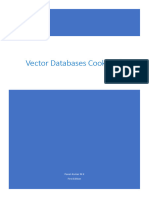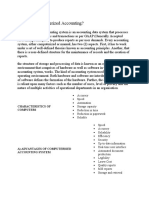0% found this document useful (0 votes)
90 views14 pagesVector-DataBase in AI
Vector databases are essential for managing high-dimensional data in AI applications, enabling efficient storage, searching, and analysis of complex data points known as vectors. They facilitate semantic search and personalized recommendations, overcoming the limitations of traditional databases. Key features of a good vector database include scalability, multi-user support, comprehensive APIs, and user-friendly interfaces, with several leading solutions like Chroma, Pinecone, and Weaviate emerging to meet modern data challenges.
Uploaded by
Yash RautCopyright
© © All Rights Reserved
We take content rights seriously. If you suspect this is your content, claim it here.
Available Formats
Download as PDF, TXT or read online on Scribd
0% found this document useful (0 votes)
90 views14 pagesVector-DataBase in AI
Vector databases are essential for managing high-dimensional data in AI applications, enabling efficient storage, searching, and analysis of complex data points known as vectors. They facilitate semantic search and personalized recommendations, overcoming the limitations of traditional databases. Key features of a good vector database include scalability, multi-user support, comprehensive APIs, and user-friendly interfaces, with several leading solutions like Chroma, Pinecone, and Weaviate emerging to meet modern data challenges.
Uploaded by
Yash RautCopyright
© © All Rights Reserved
We take content rights seriously. If you suspect this is your content, claim it here.
Available Formats
Download as PDF, TXT or read online on Scribd
/ 14
























































































